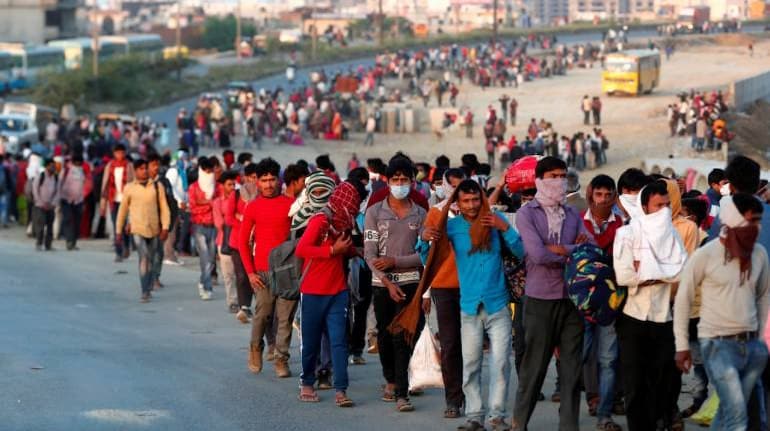



The Centre on March 31 told the Supreme Court, which was hearing a set of PILs on the issue of migration of labourers, that three out of 10 migrant workers moving from cities to villages may carry coronavirus, The Times of India has reported.
The 21-day national lockdown, announced by Prime Minister Narendra Modi on March 24 in view of the coronavirus outbreak in the country, had led to an exodus of migrant workers from cities to their native places across India.
This prompted the government to respond, with the Home Ministry saying the workers should be quarantined for at least 14 days after their return.
The apex court had, on March 30, sought a status report from the Centre on the measures taken in view of the large-scale migration.
The top court observed that the migration of labourers out of panic and fear is becoming a bigger problem than the coronavirus.
Submitting a status report, Solicitor General Tushar Mehta on March 31 said all the migrant workers who were on the road have been stopped and housed in temporary accommodations. They have also been provided with food, the Centre told SC today.
During the hearing, Chief Justice of India SA Bobde remarked that panic can destroy more lives than the virus itself and asserted that counsellors and community leaders of all faiths should be engaged for migrants housed in shelter homes.
The apex court also issued directives for food, beds, medical treatment, counselling and water for the migrants and said fake news should be curbed. The next hearing on the matter has been scheduled for April 7.
Discover the latest Business News, Sensex, and Nifty updates. Obtain Personal Finance insights, tax queries, and expert opinions on Moneycontrol or download the Moneycontrol App to stay updated!
Find the best of Al News in one place, specially curated for you every weekend.
Stay on top of the latest tech trends and biggest startup news.